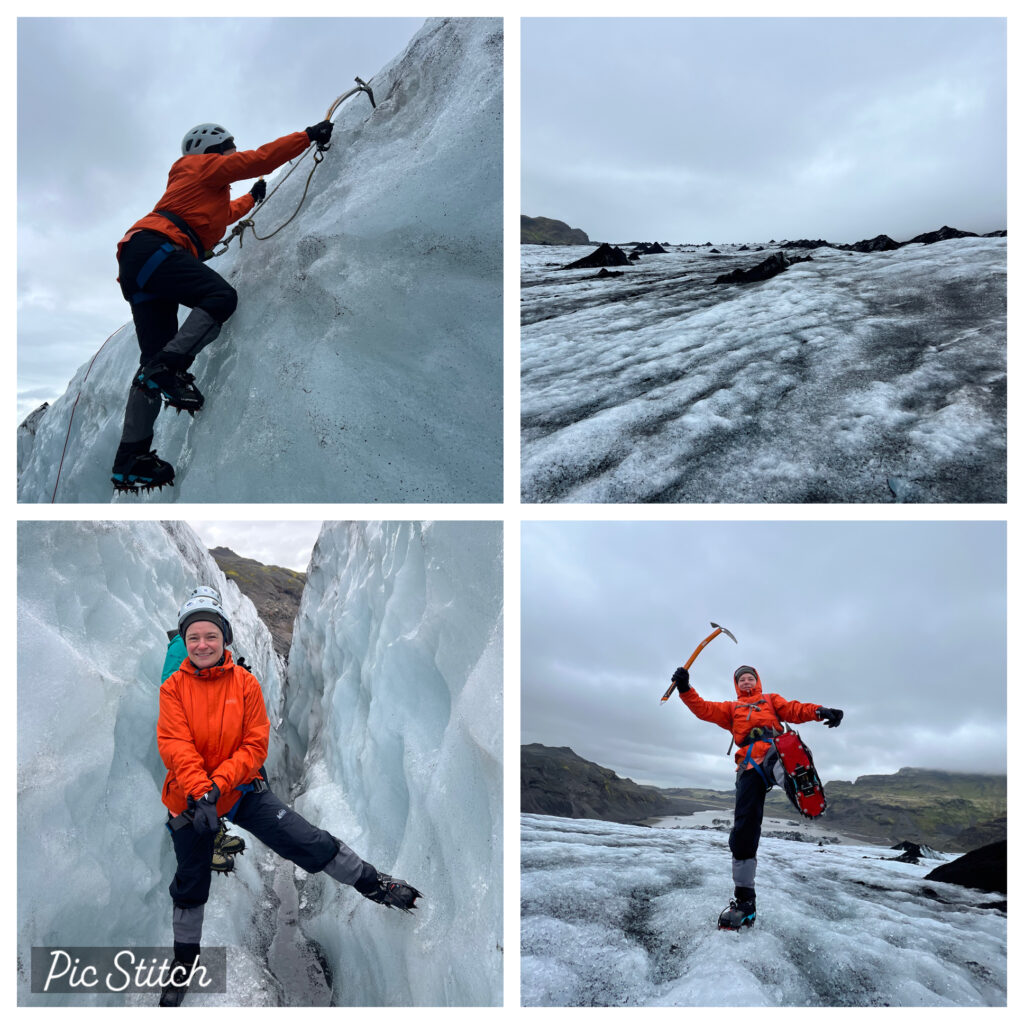World Glaciers Day: A Frozen Warning from Eyjafjallajökull

March 22 marks World Glaciers Day, a moment to reflect on the silent, majestic giants that have sustained life on Earth for millennia and are now retreating at an alarming pace. Glaciers are more than breathtaking landscapes; they are the world’s largest freshwater reservoirs, crucial regulators of ecosystems, and barometers of planetary health. And as they melt, the consequences extend far beyond rising sea levels. They reach into water security, food security, energy access, and global stability.
Climbing Eyjafjallajökull: A Personal Encounter with Change
In 2023, I had the opportunity to travel to Iceland and climb Eyjafjallajökull, the glacier that caps the most dangerous volcano in Iceland, Katla. While the view from the summit was breathtaking, the climb was shadowed by a sobering reality: the glacier was receding. Guides pointed out the visible difference in ice coverage from just a decade ago. Where there once was a thick, unbroken expanse of ice, there are now exposed ridges, meltwater streams, and signs of irreversible retreat. Standing on that glacier, I could feel the urgency that climate scientists have long warned us about.

Global Warnings: A Planet Losing Its Ice
The World Meteorological Organization (WMO) recently underscored this urgency. This year’s World Water Day highlights glacier preservation, noting that glaciers are losing mass at unprecedented rates. Glacial melt is accelerating from the Andes to the Alps and from the Himalayas to Iceland. Some regions have already passed the tipping point. If current trends continue, many glaciers may vanish entirely within the next century, with them, the ecosystems and human communities that depend on their water.
Melting Ice, Rising Tensions: The Security Dimension
The implications of glacier loss are not limited to environmental or humanitarian concerns. They extend deeply into global security. As glaciers disappear, the resulting water stress can intensify regional tensions, particularly in areas where rivers cross national borders. Countries downstream of glacial-fed rivers may conflict with upstream neighbors over dwindling resources.
Glacial loss also threatens hydropower generation, which many countries depend on for clean energy. This can lead to energy insecurity, economic volatility, and weakened state capacity in vulnerable regions. In mountainous areas, rapid glacial melt increases the risk of natural disasters, including glacial lake outburst floods (GLOFs), which can devastate communities and infrastructure.
Thus, protecting glaciers is not only about conserving natural beauty or ensuring ecological balance. It is also about conflict prevention, climate resilience, and peacebuilding. Policies aimed at climate adaptation, transboundary water cooperation, and early warning systems must be central to global security planning.
Policy, Preservation, and the Path Forward
In this context, preserving glaciers is not merely an environmental imperative but a matter of strategic foresight. Climate adaptation policies must include robust transboundary water governance, investment in early warning systems, and support for local communities facing glacial retreat. The UN’s designation of 2025 as the International Year of Glaciers’ Preservation is a welcome step, but much more is needed to match the scale of the challenge.
A Personal Reflection and a Call to Action
My experience on Eyjafjallajökull was a personal turning point. As someone engaged in global security research, witnessing the glacier’s retreat firsthand was a stark reminder that climate change is not a distant phenomenon. It is here, it is accelerating, and it is reshaping the geopolitical landscape in real time.
World Glaciers Day is an opportunity to raise awareness and act. Let us amplify the voices of scientists, local communities, and policymakers working to protect these vital systems. Because when glaciers melt, they do not just vanish, they leave behind a ripple effect that touches us all.

